10 Must-See Spots in Montmartre
Montmartre is one of Paris’ most charming neighborhoods, but it’s easy to get stuck in the typical tourist spots. If you’re looking to experience the real Montmartre – its hidden streets, charming cafés, secret corners – you’ve come to the right place!
1. Rue de l’Abreuvoir
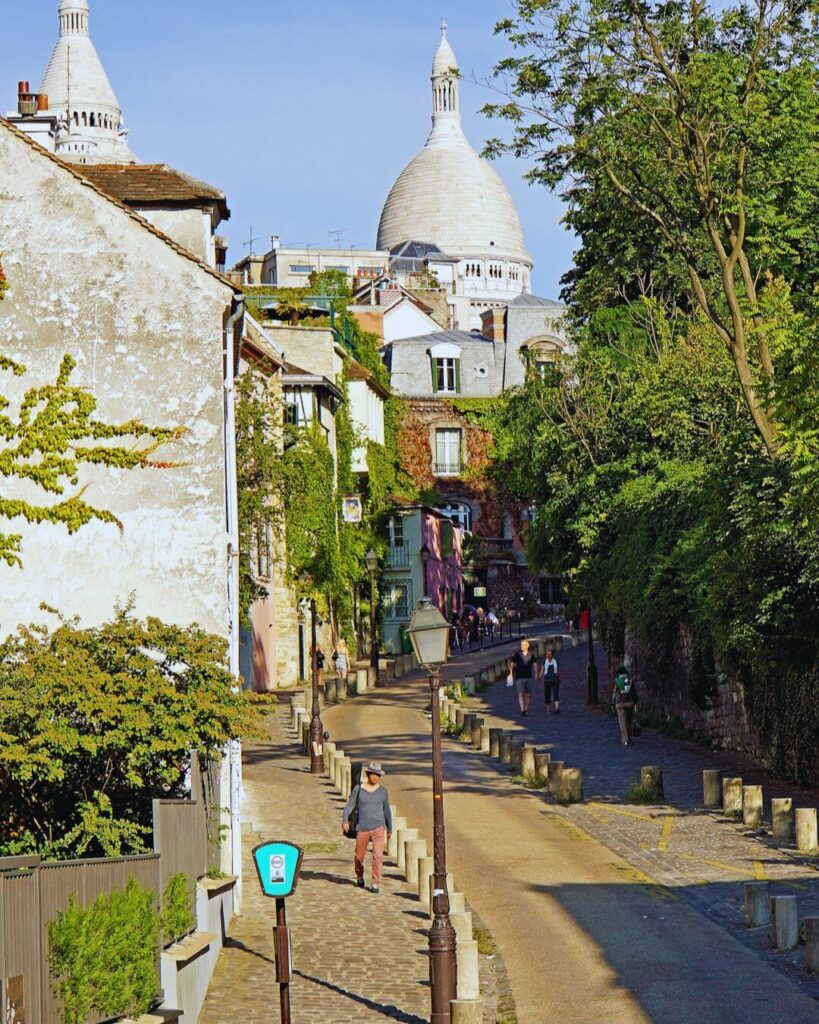
Rue de l’Abreuvoir is probably Montmartre’s most scenic streets, with its charming cobblestones and pastel houses. As you walk along, you’ll pass La Maison Rose, the iconic pink café that’s a favorite for photos. The street feels peaceful, especially in the early morning or evening.
2. Place Dalida: The Tranquil Charm
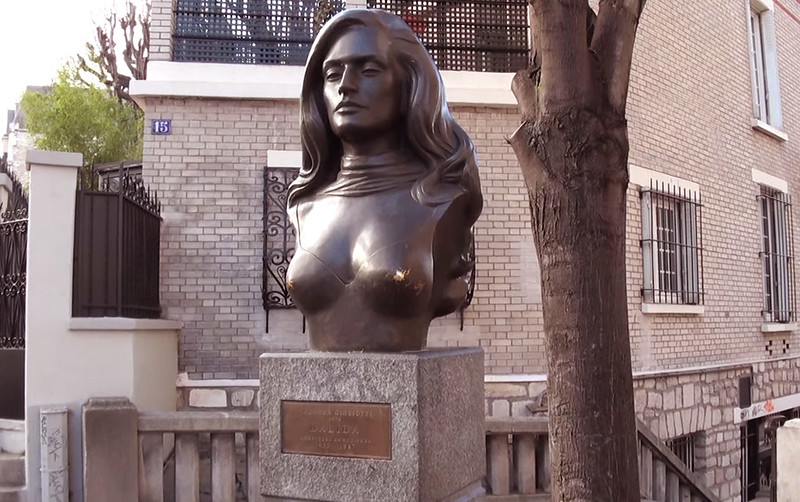
Place Dalida is a quiet square dedicated to the famous French singer. It’s a lovely hidden spot, shaded by trees, where you can take a break from the busier parts of Montmartre. The statue of Dalida stands in the center, and touching the bust is said to bring good luck.
3. Villa Léandre
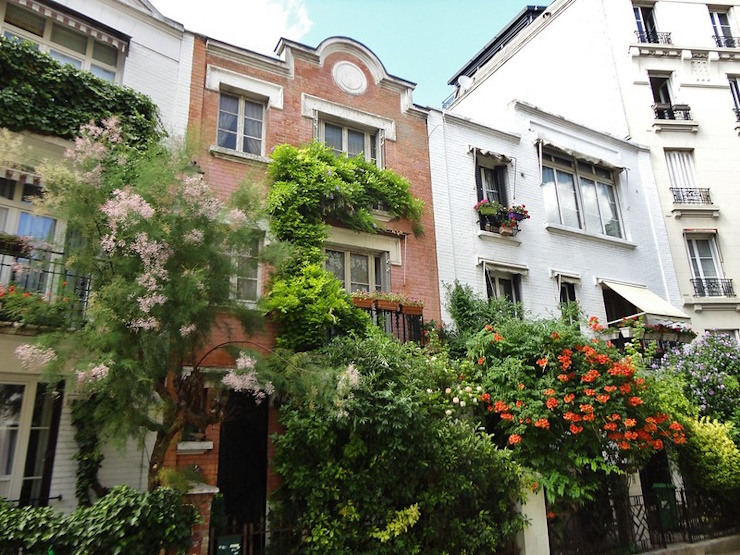
Villa Léandre is a small, hidden street in Montmartre that feels more like an English village than a part of Paris. Lined with charming, 1920s-style houses, this quiet cul-de-sac is a peaceful escape from the busy city streets. The street’s architecture features Art Deco influences mixed with English cottage-style homes. A favorite spot for a less touristy, residential side of Montmartre.
4. Rue Cortot and the Last Vineyard of Paris
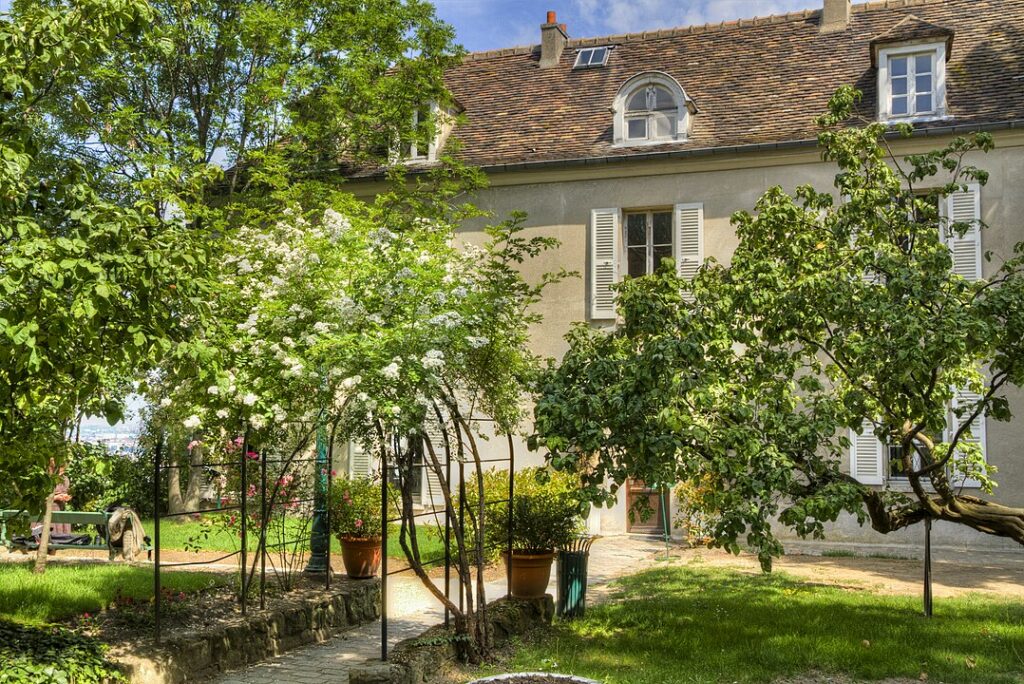
Rue Cortot is one of Montmartre’s oldest streets, with charming houses and the Musée de Montmartre, where Renoir once lived and worked. As you walk down this street, you’ll come across Vigne du Clos Montmartre, Paris’ last remaining vineyard, tucked away on the hillside. You can even attend wine festivals here in the fall.
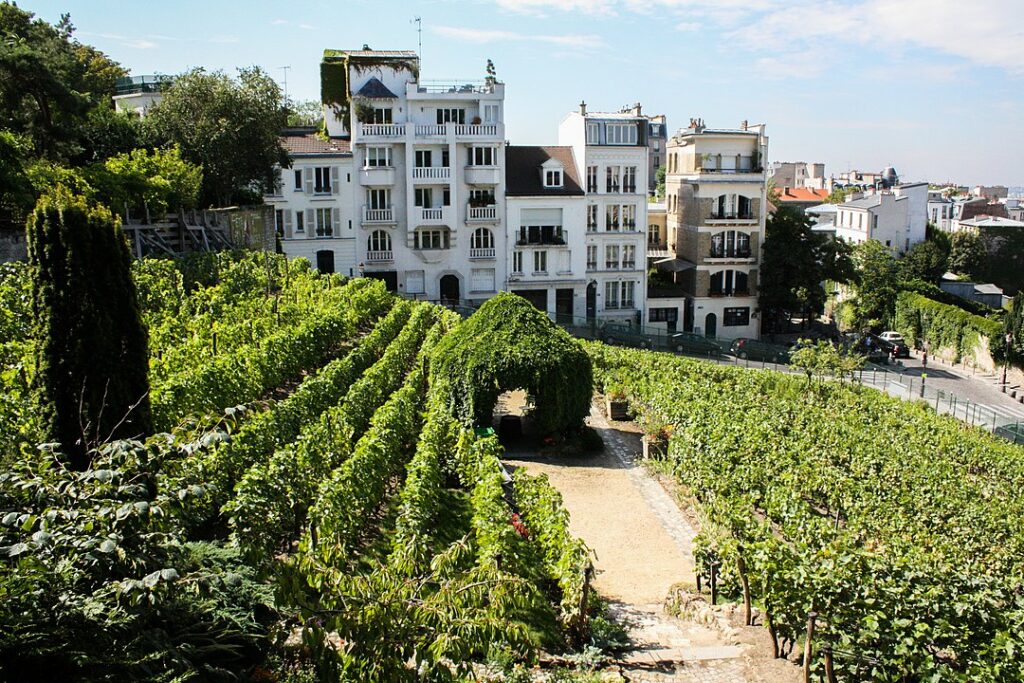
5. Views from Rue du Mont Cenis
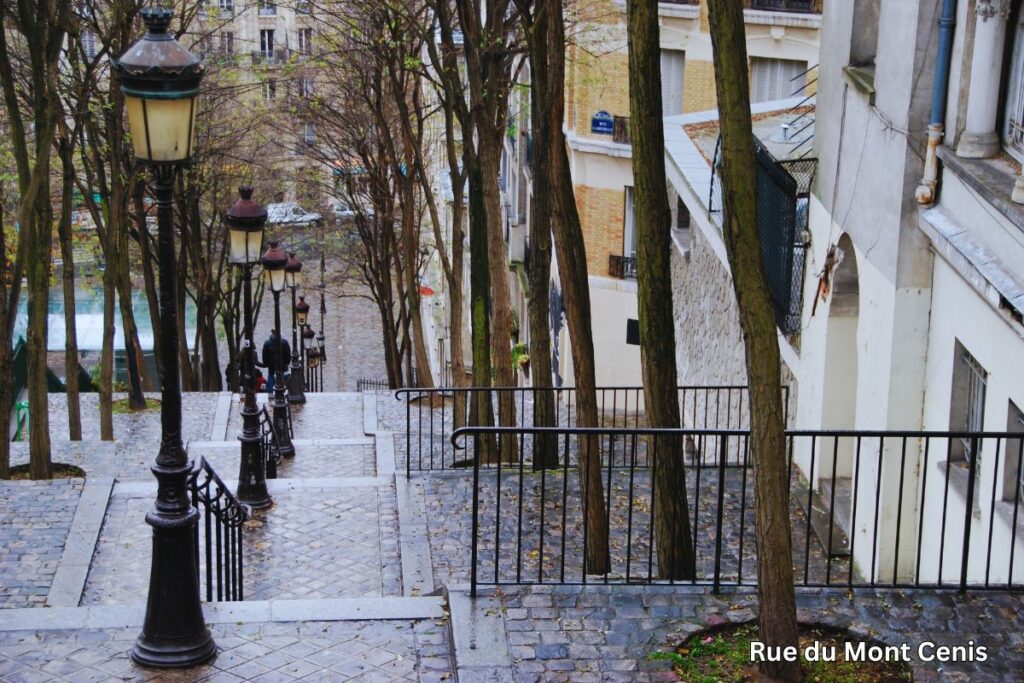
Rue du Mont Cenis has some of the best views in Montmartre. This steep, cobblestone street leads you up toward Sacré-Cœur, with great panoramas of Paris unfolding. You’ll pass charming old buildings, cafés, and great photo spots. The climb can be tough, but the views from the top make it all worthwhile.
6. Le Passe-Muraille
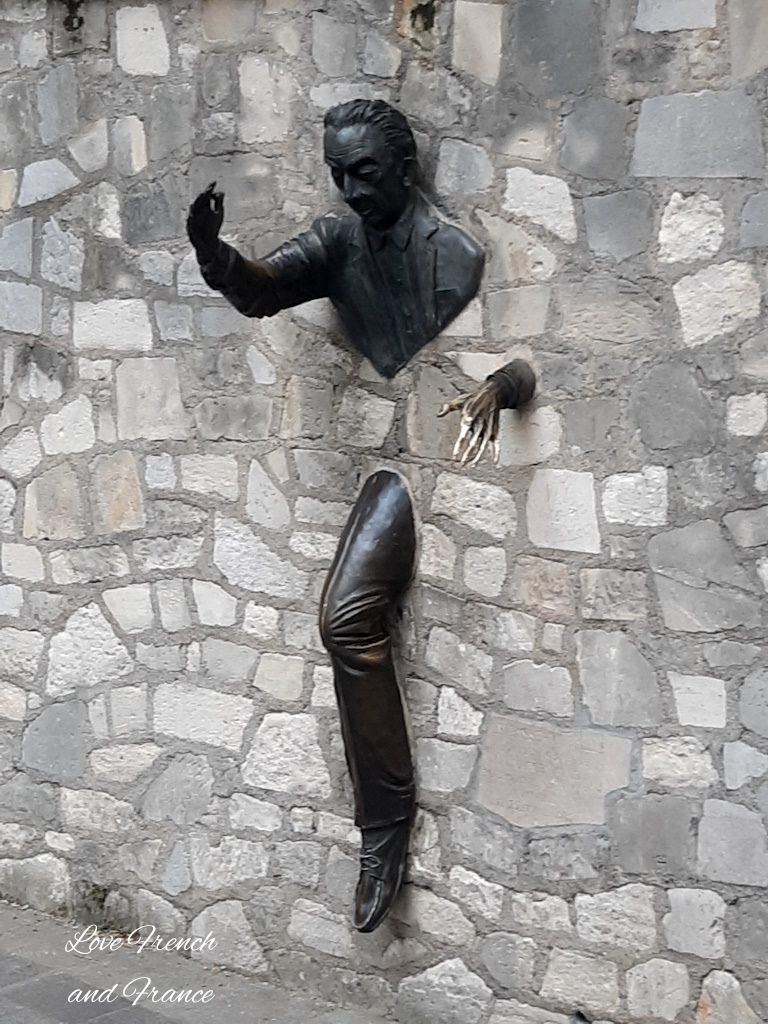
The Passe-Muraille sculpture near the Place Marcel Aymé was created by famous actor and artist Jean Marais in 1989. It represents a man walking through a wall, inspired by the short story “Le Passe-Muraille” by French writer Marcel Aymé. In the story, a man discovers he has the ability to pass through walls. The figure is made of bronze and shows the man halfway through the wall.
7. Place Émile Goudeau and the Bateau Lavoir
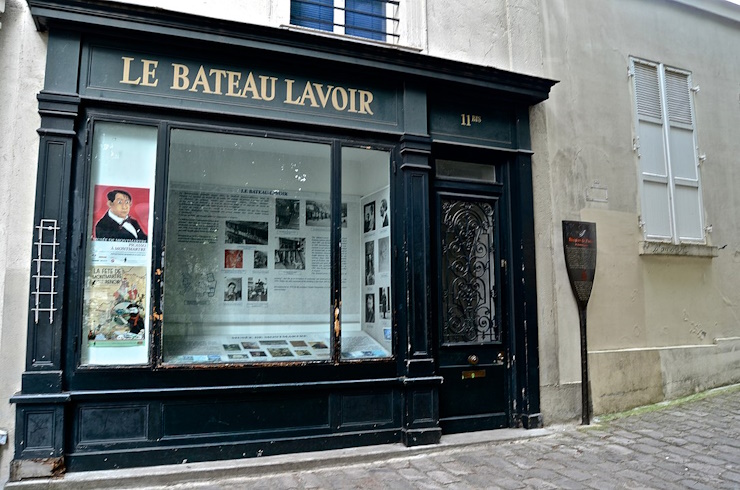
Place Émile Goudeau is a quiet square with a lot of history. It’s home to the Bateau Lavoir, a famous art studio where Picasso, Modigliani, and other notable artists lived and worked in the early 1900s. This building played a key role in the birth of Cubism. Though the original building burned down, it’s been rebuilt.
8. Artistic Vibe at Place du Tertre
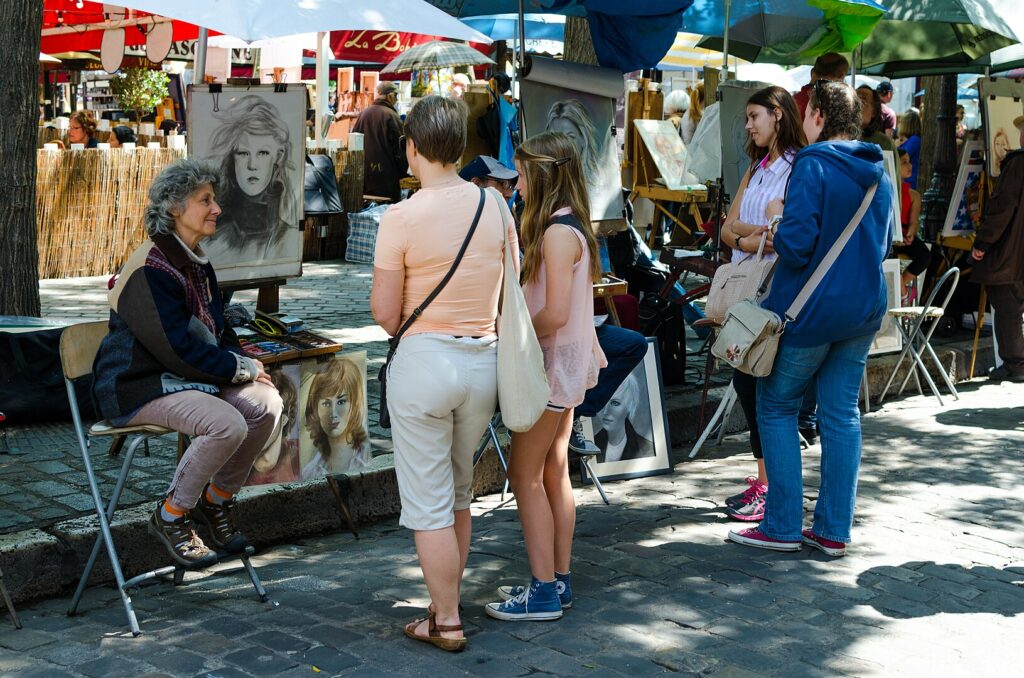
Place du Tertre is a lively square in Montmartre, not far from Sacré-Cœur. It’s full of artists who set up their easels and offer to paint or sketch your portrait. This tradition has been around for over 100 years, when famous artists like Picasso used to hang out here. While it can get busy with tourists, the energy and creativity of the place make it a fun stop to see local art and enjoy the vibe.
9. Le Mur des Je t’aime (and the Abbesses Metro)
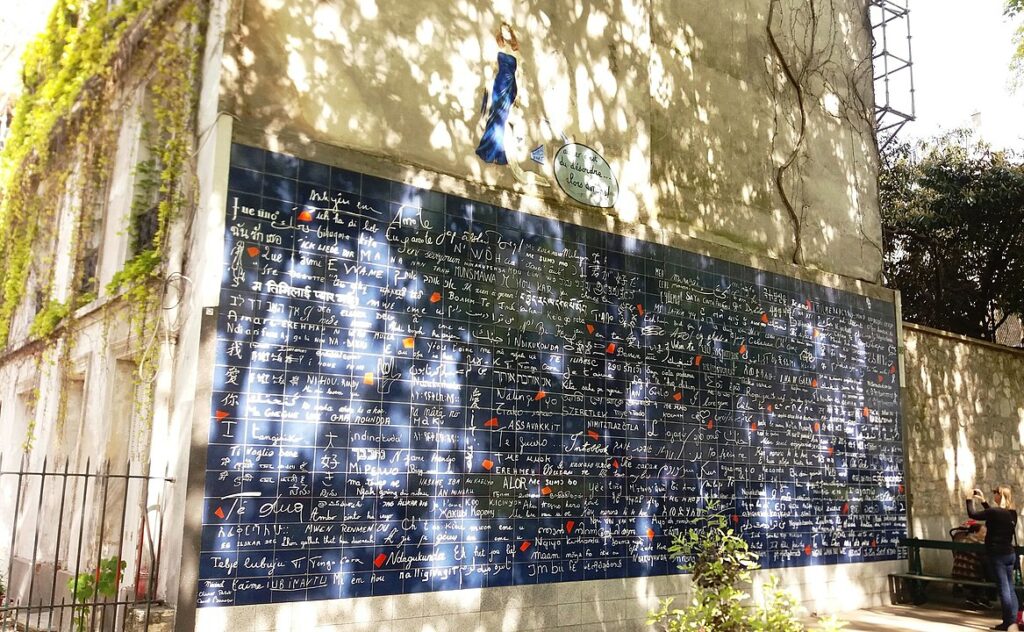
The “Mur des Je t’aime” (Wall of Love) is a unique landmark dedicated to love, located in the Square Jehan Rictus, Place des Abbesses, right near the Abbesses metro station. The wall features “I love you” written in over 250 languages. It was created by artists Frédéric Baron and Claire Kito in 2000 to celebrate love in all its forms.
The Abbesses Metro station is at the heart of Montmartre, surrounded by a lively neighborhood that still has that village feel. The area is full of life, with street musicians, quirky shops, and cafés with outdoor seating.
10. Quiet Streets Behind Montmartre
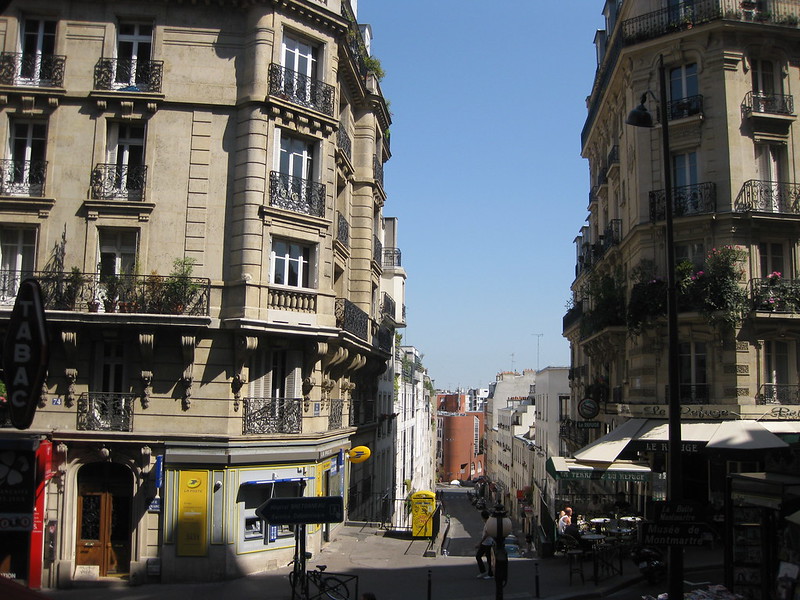
The streets behind Montmartre, near Lamarck-Caulaincourt metro, have a quieter, non-touristy feel. These are narrow streets lined with old houses, leafy trees, and small, local cafés. It’s a cool area to wander, get lost, and discover hidden gems away from the crowds. The pace feels slower and you get a real sense of the everyday life of Montmartre’s residents.
